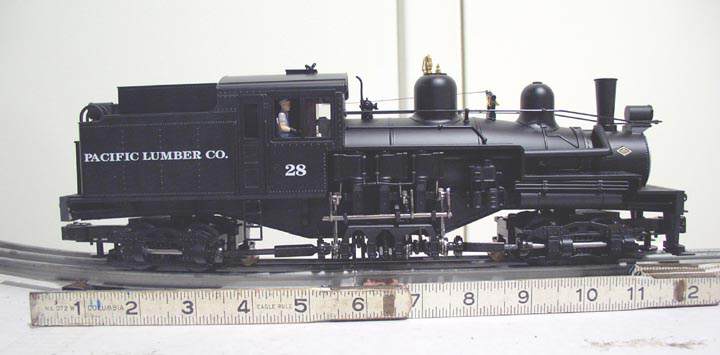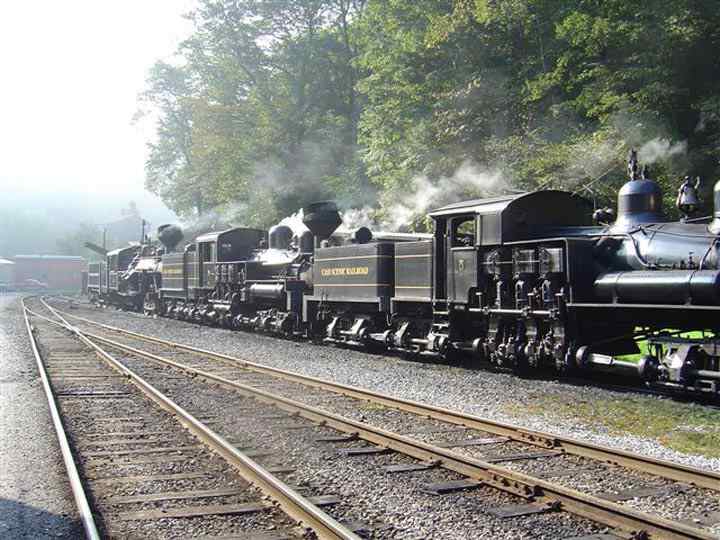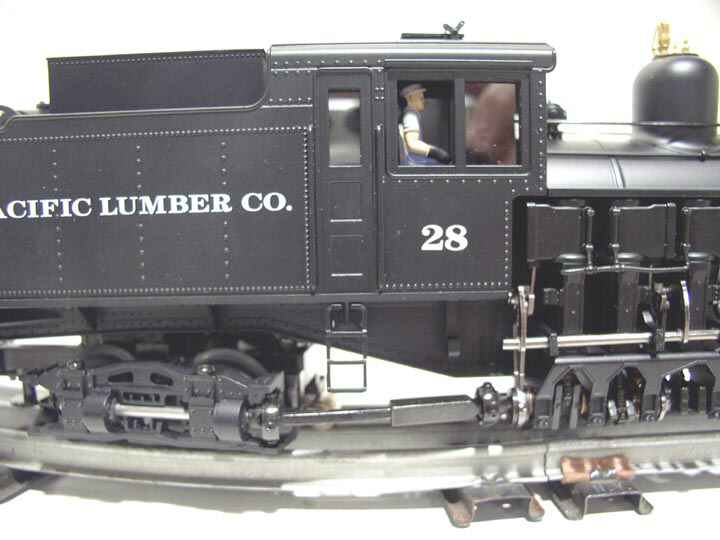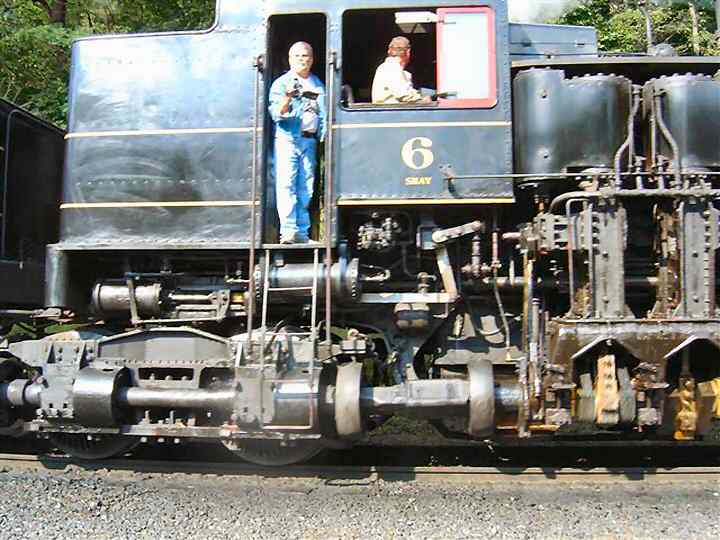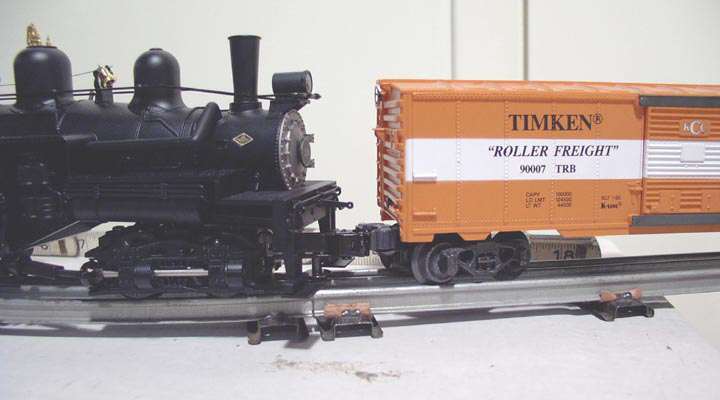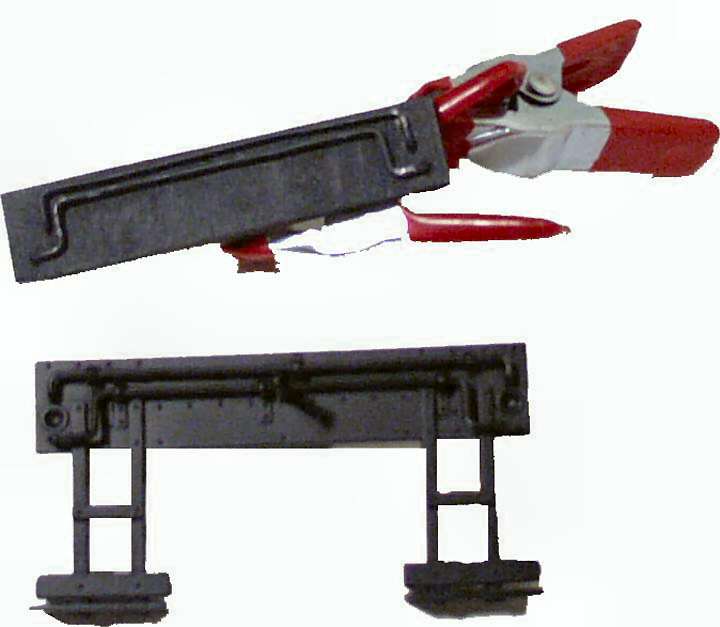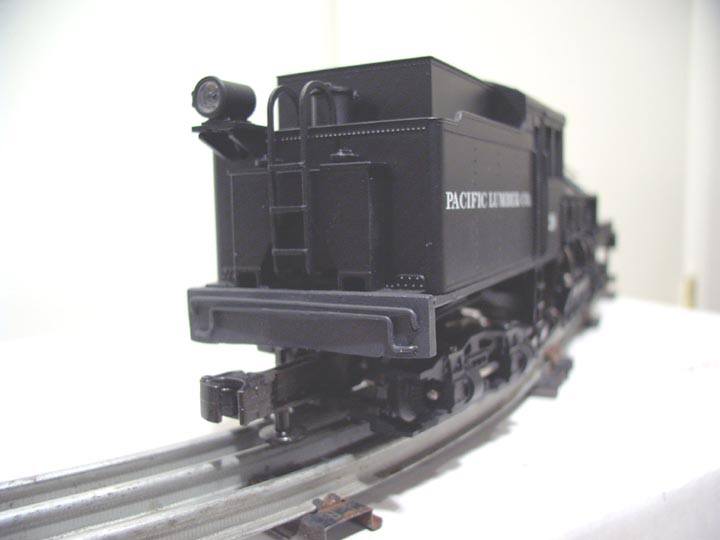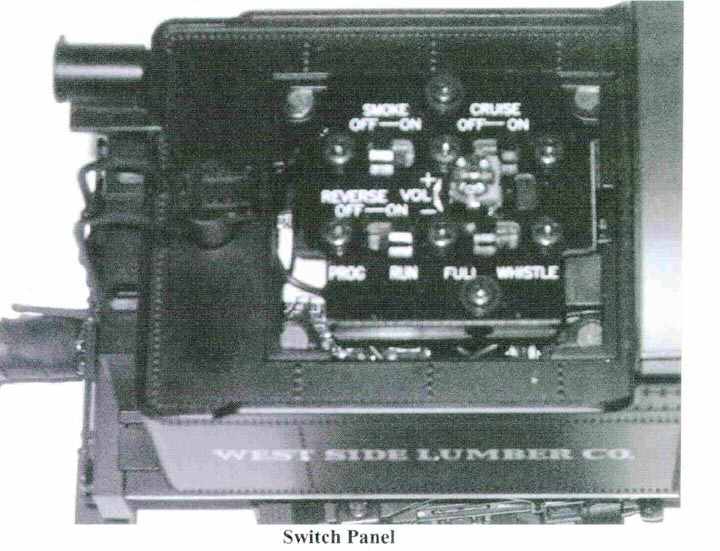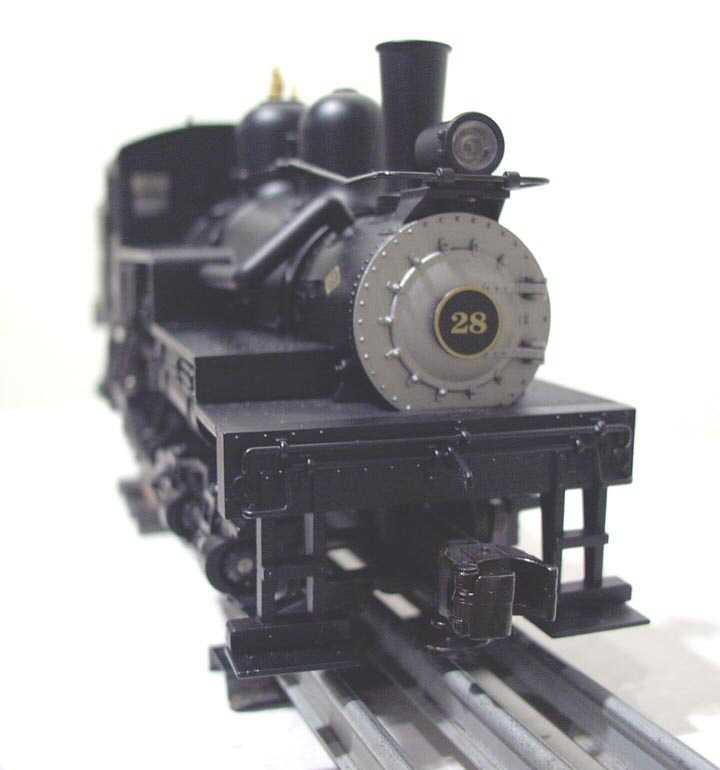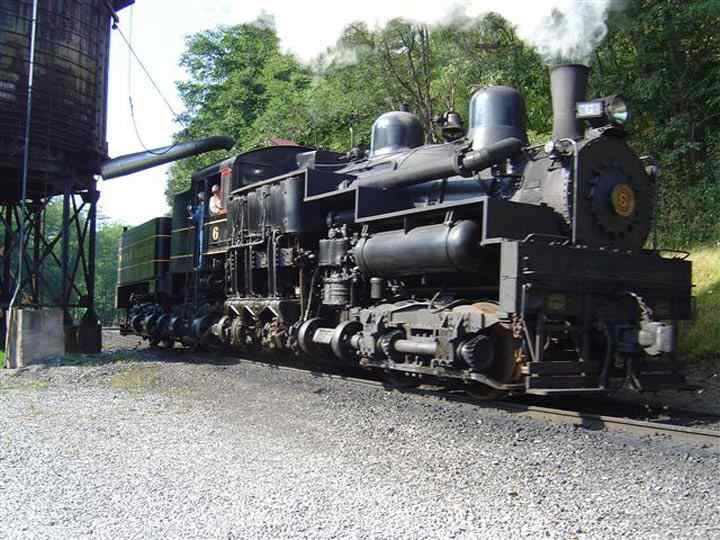“Oh Shay, Can You See “–a review of the K-Line K3499-0028W Pacific Lumber Co. Scale Shay
By PAUL PULLEN
In the spring of 2002, the then new K-Line catalog showed a new item, a two truck Shay was being offered. When I was serving in the U.S. Army in the late 1960’s, I was fascinated with the Shay, and purchased an HO version manufactured by Pacific Fast Mail. (Lionels and serving in Izmir, Turkey, did not mix too well.
I immediately placed an order for their Pacific Lumber Shay, K3499-0028W. This was a step down from my three-truck Shay in the 1960’s, but I felt this one would run on my railroad, and be a neat addition to the Buffalo Creek Railroad. The engine is equipped with sound, smoke and a cruise control.
As soon as the engine arrived, I unpacked it, and dropped it on the main line of the Buffalo Creek Railroad where I started to put it through its paces. The main line of the BCRR is run on O-42 curves, and the engine performed in a very satisfactory manner on the main loop.
The engine is an excellent model of a Shay.
Photo 3 shows the cab and cylinder area of the K-Line Shay, while Photo 4 shows the same area of a 3 Truck Shay at Cass Scenic Railroad. The operation of the cylinders and gear are really neat to watch as it runs. The engine responds well, although it does seem to respond like my other “smart” locomotive, a MTH PS-2 Consolidation. When you first power it on (in conventional mode-my only means of powering my trains), the engine lights come on, but nothing else seems to happen. Turn the power off, and back on again, and the engine goes into the next operational phase that the electronic e-unit has. Sound also starts with the second power up of the engine. If you were last running in forward, no matter how many hours or days ago, the engine will next be in reverse. This operation is much like the old e-unit from the pre and post war days.
Sound is O.K. on this unit. Steam sounds seem to distort a little when running, and is present after the first power-up. Whistle and/or bell sound with either a + (whistle) connection to the ground rail or a – (bell) connection to the ground rail. On my operation, I use 1.5 volt D cells to trigger whistle or bell. I am using a ZW on the main line, so I could use it to trigger a whistle, but have wired in D cells into all three main lines to be able to run whistles from my old RW transformer. When I purchased my Consolidation, I added a bell switch on to the main line. The whistle and/or bell override the steam sounds when triggered in conventional mode. I do find I will get phantom triggers of whistle and or bell when the engine sometimes crosses a UCS track or crosses an O-22 switch.
I will not comment on the operation of the smoke generator because I have not run smoke at all. My wife has allergies, and I try to keep the railroad as a politically correct “smoke-free” operation.
At the beginning, I alluded to problems on less than O-42 track. The engine can easily negotiate O-31 track all by itself, but it cannot negotiate O-31 curves with a train behind it. K-Line has tried to fix this problem by including what they call an O-31 coupler bracket, but I find it does not help the engines on my main line bypass, which uses an O-22 switch followed by a standard 10 inch O curve, then another O-31 curve. The bracket moves the coupler pivot point, extending it out an additional approximate ½ inch behind the engine. This helps get more of a curve out of the engine, but does not help it make the curve on my layout.
The engine’s coupler position forces the second axle of the truck off of the track, causing a nice sparking as it shorts the central rail to the ground rail. Photo 5 shows this with original end beam attached. The problem comes from the steps that extend down from end beam. I worked with the end beam/step combination by building a bass wood replacement for the end beam. (Photo 6) No matter how narrow I made the steps, the engine would derail the second axle on the coupled truck. This work was done without K-Line’s O-31 bracket installed. I find it also derails the car with the coupler bracket installed.
I found that the end beams are mounted on the engine with just two screws. I removed one of the end beams, and put the engine on the track. I find it can run properly without derailing any cars. I created new bass end beams to see if any steps could be used with the engine, and found that in order to work with on O-31 curves, the engine has to have no steps. Photo7 shows the back end of the engine with my new end beam attached. (Maybe I should set up an O-27 loop to try the engine on. I haven’t done that, yet.)
The engine, when running with the cylinders closest to the standard position of the O-22 remote control box, on the curve side of the track, hits the O-22 remote control box. It just grazes this box, but it hits it when going around the curve track instead of running the straight.
The engine has a very well placed set of controls. (Photo 8) They are accessed by removing the coal load behind the engine.
Photos 9 and 10 show the nose view of the K-Line Shay and the Cass Scenic Railroad Shay.
NOTE: I would like to thank fellow TTMLer Erney Alewine for permission to use his pictures of a group of 12 inch = 1 foot Shays that I have used in this article.

